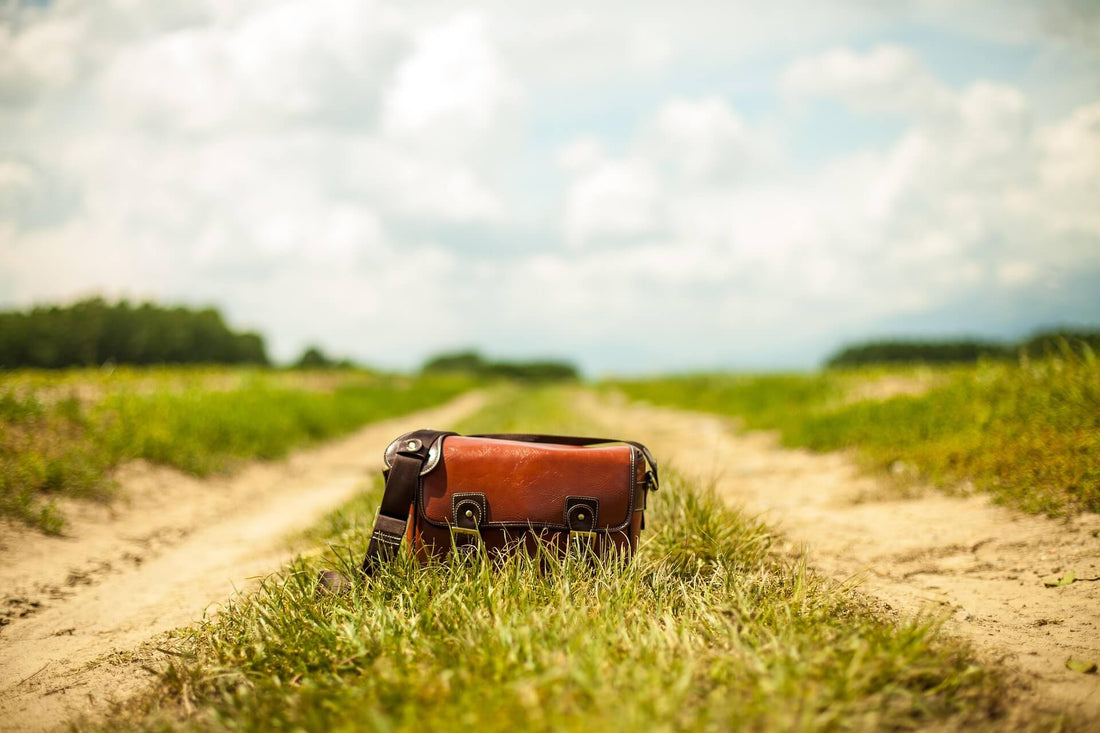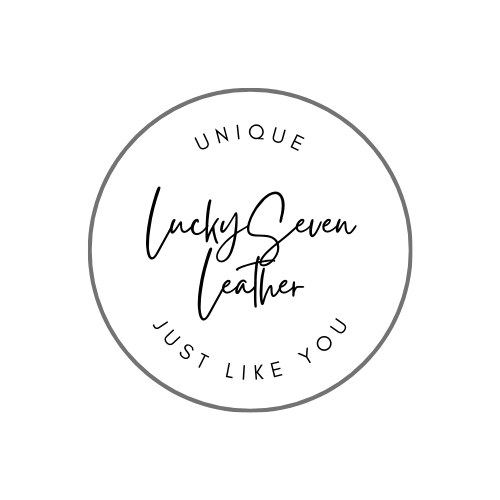
Real vs Faux Leather: The Truth About “Eco-Friendly” Vegan Leather
A love letter to real leather. The lasting, honest, handcrafted choice.
The scent of real leather is unlike anything else. It's warm, earthy, alive.
The smell of faux leather though, is that faint chemical tang of plastic left in the sun.
(Some people love smelling new books - myself included! - while some others - myself included again! - love smelling a new piece of full grain, veg tanned leather)
There’s a quiet rewriting happening in the world of craftsmanship and fashion. A polished, profitable narrative that blurs the truth.
If you’re not paying close attention, you might believe it too:
-
That real leather is cruel and comes from violent, painful death of innocent animals.
-
That “eco-friendly” vegan leather is the conscious, sustainable choice, the solution to cruelty, to pollution, to poisoning earth, lands and waters.
But this is simply not true: There is no such thing as truly sustainable faux leather.
Not one version of “vegan leather” lives up to the name.

What Is Vegan Leather, Really?
The term “vegan leather” sounds soft, ethical, and clean (this is "greenwashing") but beneath the buzzwords lies mostly plastic. Most “vegan leather” is made from polyurethane (PU) or polyvinyl chloride (PVC), petroleum-based materials that require harsh chemicals to produce.
These materials:
-
Don’t breathe.
-
Don’t age gracefully.
-
Don’t return to the earth.
- Don't last, don't protect you or the environment. And far from being cruelty-free, their production and disposal create a new, systemic cruelty through pollution, poisoning the land, water, and wildlife that we share the planet with.
The truth is that they crack, flake, and leach toxic chemicals and microplastics into landfills for decades. The health effects on your skin and body are another concern entirely.
The Hidden Dangers Beneath Faux Leather
Faux leather doesn’t just harm the environment. It harms your skin too.
I always lurk on customers reviews related to leather - no matter the shop, the platform or product - to find the hidden gems of improving potential. I’ve witnessed customers developing rashes and irritation from cheap, trendy “eco-friendly” leather alternatives.
Your skin knows the difference. It recognizes what breathes and what doesn’t.
Real leather, responsibly tanned and handcrafted, works with your body and not against it.

Real Leather: Sustainability Rooted in Respect
Real leather is a byproduct of the meat industry. It is NOT the cause of slaughter, but a way to honor what would otherwise be waste.
If unused, this material would be burned, buried, or discarded. Instead, it’s transformed into something lasting and meaningful.
That’s true sustainability (and some don't like it! Why? It costs them money!)

This is because the business model of fast fashion and other consumer goods industries is built on high volume and repeat purchases. Companies that prioritize a quick turnover of inventory prefer cheap, short-lived materials like faux leather.
When a product is designed to wear out quickly (to crack, peel, or become outdated), it forces the customer to return and buy a replacement. This continuous cycle ensures a steady flow of sales and profits, which is why they often market these products with trendy, ethical-sounding buzzwords to hide the true cost of their disposable nature.
Real leather, responsibly tanned and handcrafted, works with your body and not against it.
True sustainability isn't just about just using a byproduct; it's about the entire lifecycle.
Yes, that includes the tanning process.
While some fast-fashion leather goods may contain heavy metals from a quick, industrial process, our focus here is on natural and slow tanning methods that create a durable, beautiful material without harmful chemicals.
No synthetic alternative can match this lasting value and full-circle integrity.
Why Fake Leather Dominates the Market
Big brands prefer you to buy cheap, short-lived products that wear out fast and keep coming back to buy again.
Faux leather is designed to fail soon: to peel, warp, and dissolve.
It’s often wrapped in positivity like “vegan,” “eco,” and “cruelty-free”, but mostly it’s greenwashing:
a plastic product dressed in ethical marketing and fancy names.

What About Plant-Based Leather?
Exciting innovations like apple leather, mushroom leather, and pineapple fibers are emerging.
But most aren’t truly biodegradable yet. Many still rely on synthetic plastic bases, trapping them in the same environmental problems.
These so-called "next-gen" materials are often a composite blend. While they incorporate natural plant fibers, these are typically bound together with polyurethane (PU) or other plastic polymers to give the material the necessary durability, water resistance, and structure.
Without this plastic coating or base, the material would be too fragile for most consumer products. Therefore, when these products are eventually discarded, the plant-based components may degrade, but the plastic elements will remain in landfills for centuries, breaking down into microplastics that can pollute the environment.

This makes them a partial solution at best, and far from the truly "eco-friendly" alternative they are often marketed as. These materials are still fragile, short-lived, yet often sold under the illusion that “plant-based” means “planet-friendly.”
That future may come some day. But today, it’s still a work in progress.
Choosing Leather With Soul
This isn’t about guilt but it’s about clarity.
When you run your fingers over a piece made of full-grain leather, feeling its warmth, strength, and slow evolution, you know this is not something disposable.
It’s something to live with.
To soften and shape over time.
To carry your story and scent.
To pass on.
It’s the difference between a genuine story and a cheap replica.

The Lasting Power of Real Leather
I don’t use synthetic leather, despite the fact that I have been very tempted to do so beacuse of their huge amount of options in colors, designs and textures, and the fact that staying "Real" limited -somehow- my variety when I started (this is now not true, as I have found my own endless possibilities and signature crafting style with the same leathers from the same supplier for years).
I have tried some small projects with them, even some bracelets, and the results were pretty, I won't lie - but failed the test of time (in a rather short time, indeed!)
What I earned in visual beauty, lacked in durability, touch and feel:
-
I can't engrave PU Leather - the toxic fume is unbearable (and dangerous!) but even without it, the surface shrinks like melting plastic.
-
I can't dye it or paint it - colors don't absorb, don't sit well.
-
It cracks when I want to stitch it or add rivets.
-
It doesn't let my wrist breathe and it feels sweaty, giving me the itch.
-
It "dries" after a while, and cracks and peels when stretching/bending.
-
The edges cannot be burnished or finished to a smooth, professional look like real leather.
-
It is impossible to repair once it has torn or flaked.
So, I’ve seen what they’re made of, and what they become.
Therefore, I will always choose the real deal: The lasting.
The flawed and beautiful truth of leather that remembers every moment it lives through.
Because real leather carries more than form.
It carries soul and memory.
And in this studio, that is the only kind of material worth touching. It’s a choice with a story, a scent, and a soul. Join me in choosing the real and support the artisans and the craftspeople who believe in making things that last.
Let's build a community that values quality over quantity!

